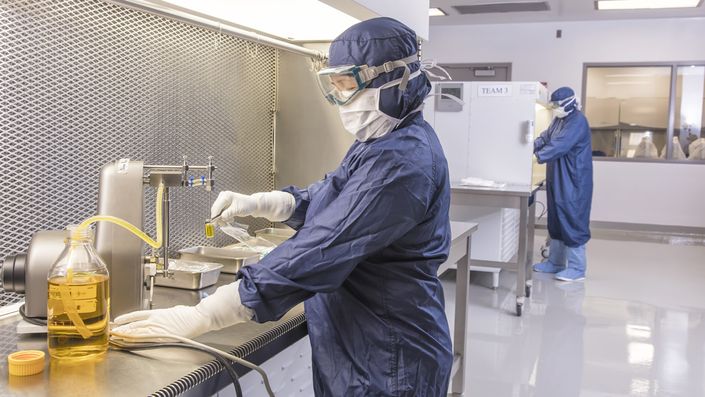Click to download Course Brochure
Batch Record Design & Review – Online Course Description
This online training course provides a comprehensive and practical understanding of Batch Record Design, Documentation, and Review in compliance with FDA, EMA, and EU GMP requirements. Regulatory agencies require every manufacturer to maintain written procedures that document production and process controls — collectively known as batch records. Additionally, there must be formalized procedures for batch record review to ensure accuracy, traceability, and compliance with global quality standards.
A well-structured Batch Record Review (BRR) system is essential for capturing and verifying all critical process parameters associated with the manufacturing of pharmaceuticals, biologics, and medical devices.
Through real-world examples and case studies, this course demonstrates best practices in designing and maintaining inspection-ready batch records. Participants will learn how to identify and correct documentation errors, implement robust review workflows, and maintain data integrity across all stages of production.
This accredited training also covers Master Batch Records (MBRs), regulatory requirements, and the key steps involved in issuance, reconciliation, review, and final QA disposition.
By the end of the course, attendees will understand how to design, document, and review batch records that meet global regulatory expectations while improving efficiency, quality, and compliance.
Training Agenda
Regulatory Requirements applying to Batch Record Review, Pharmaceutical Documentation & the Quality System
- Global regulations and expectations
- Regulations Update and Latest Developments in Industry
- How documentation fits into the Quality System of recommendations and regulations
- Important data for Quality Assurance
- Risk Assessment and Continuous Improvement
The Design of the Master Batch Documentation
- Is there a need for re-design?
- Important aspects to consider
- How to gain efficiency
Efficiency in Batch Record Review
- Layout and handling
- How to reduce review time: examples
- How to handle and document deviations
- How to present review results to the QP
- Balanced Score Card
- KPIs
Risk Assessment/ Management Applications within the Batch Record Process
- How the risk lifecycle links with the BRR stages:
- Risks associated with paper and electronic records
- Risks associated with people checking documentation
- Relative risk factors
- Risks associated with the process
- Risks for QP 'discretion'
- Quality Risk Management
- Impact the effectiveness of deviations, OOS and
Change Controls
- Improvement of root cause investigations
- Using QRM to perform a SWOT analysis
- What does a good risk assessment look like?
QA Oversight on EBR validation activities
- Validation Life Cycle
- Qualification activities
- Maintenance
- Training
Who Will Benefit
This online training is designed for professionals in the Pharmaceutical, Medical Device, and other life science industries. This Education Course is designed for all persons in Production and Quality Units who deal with the design and review of batch documentation in pharmaceutical, biopharmaceutical and API production. It is also addressed to Qualified Persons who want to improve their system of the batch record review
It will be especially valuable to the personnel and management, including senior management, in these areas:
✔️ Quality Assurance (QA) & Quality Control (QC) Professionals
✔️ Manufacturing & Production Managers
✔️ Regulatory Affairs Specialists
✔️ Batch Record Reviewers & Documentation Teams
✔️ Validation & Compliance Officers
Course Format:
📌 Online, On-Demand / Live Virtual Sessions
📌 Case Studies & Real-World Applications
📌 Interactive Exercises & Batch Record Review Workshop
📌 Certificate of Completion
This training ensures participants enhance compliance, reduce batch release delays, and optimize batch record management to support successful regulatory inspections.
Hear from Our Learners: Real Success Stories
⭐️⭐️⭐️⭐️⭐️
This training completely improved our batch record process. Reviews are faster, and errors have dropped significantly.
— QA Manager, Pharmaceutical Company
⭐️⭐️⭐️⭐️⭐️
We learned how to design batch records that are clear, traceable, and audit-ready — a game-changer for our production team.
— Quality Assurance Lead, Contract Manufacturing Organization
⭐️⭐️⭐️⭐️⭐️
The course provided actionable tips for both paper and electronic batch records. Compliance and efficiency have never been easier.
— Document Control Specialist, MedTech Manufacturer
✅ Frequently Asked Questions (FAQ)
1. What is a batch record?
A batch record is a detailed document that records every step in the production of a batch, ensuring traceability, quality, and regulatory compliance.
2. Why is efficient batch record design important?
Well-designed batch records reduce errors, simplify reviews, improve operational efficiency, and ensure audit readiness under cGMP regulations.
3. Who is responsible for reviewing batch records?
Typically, QA/QC teams, production supervisors, and regulatory personnel review batch records to ensure accuracy and compliance.

Know Your Faculty
Kelly Thomas, Head Of Quality Assurance (USA)
A highly experienced Quality Assurance, Quality Control, and Regulatory Compliance leader with over 20 years of global experience in pharmaceuticals, biotechnology, and medical devices. Expertise includes API manufacturing, aseptic and terminally sterilized processes, combination products, and all dosage forms — including sterile injectables, oral solids, aerosols, and controlled substances.
Proven success in leading facility start-ups, Pre-Approval Inspections (PAI), and routine cGMP surveillance inspections with a strong track record of compliance with FDA, EMA, Health Canada, IMB, JP, and ANVISA regulatory bodies.
Recognized for building robust quality systems, implementing supplier management and internal audit programs, and driving Lean Six Sigma and continuous improvement initiatives. Strong leadership in staff development, KPI performance management, process validation, technology transfer, and data integrity compliance.






